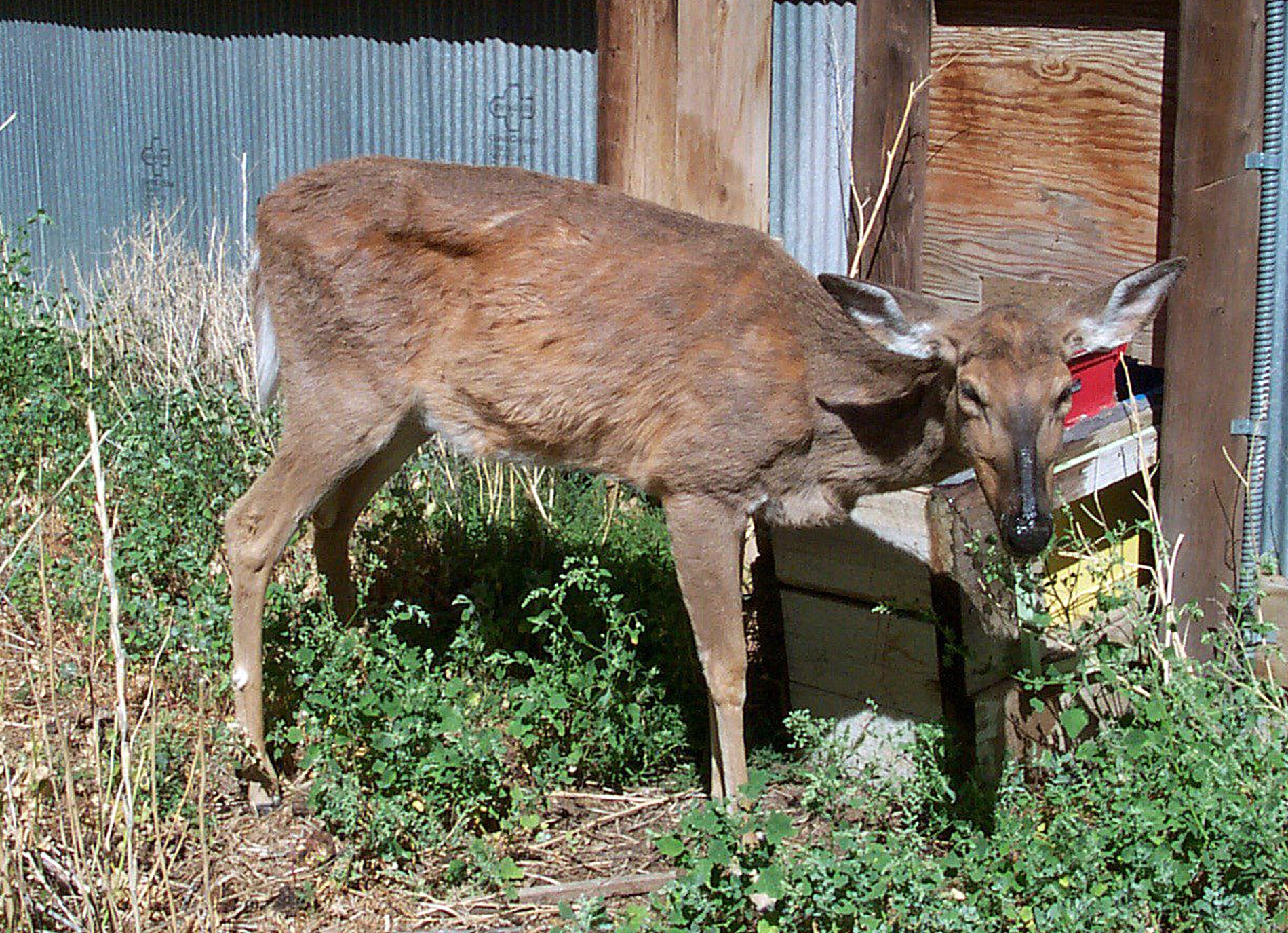By DAVID RAINER, Alabama Department of Conservation and Natural Resources
With confirmation of the first case of Chronic Wasting Disease (CWD) in west-central Mississippi, the Alabama Department of Conservation and Natural Resources (ADCNR) and the Alabama Department of Agriculture and Industries have quickly responded to the news.
ADCNR’s Wildlife and Freshwater Fisheries (WFF) Division added Mississippi to the list of states where the importation of body parts from members of the cervid family – white-tailed and mule deer, elk and moose, etc. – is prohibited unless the meat is deboned and other regulations followed.
“We’ve been warning about this for years, that this was not something that was fabricated, and we needed to do everything in our power to keep it out of Alabama,” said WFF Director Chuck Sykes. “Now it’s hit home. It’s real close now. What it means is we, as an agency, can only do so much. We can set regulations. It’s up to the hunters to fulfill those regulations. That’s why we’ve made a big media push to get the word out.
“We don’t want people to panic, but we want people to be cognizant and understand that this is a major issue. It can be prevented, but it’s going to take everybody participating.”
Currently, 25 states and two Canadian provinces have confirmed cases of CWD. Any member of the cervid family harvested in those CWD-positive areas must be properly prepared before it can be legally brought into Alabama. Parts that may be legally imported include completely deboned meat, cleaned skull plates with attached antlers with no visible brain or spinal cord tissue present, upper canine teeth with no root structure or other soft tissue present and finished taxidermy products or tanned hides.
CWD is a transmissible spongiform encephalopathy found to affect deer and other cervids. It is believed to be caused by an infectious prion and has an extended incubation period. Diagnosis requires examination of brain and lymphatic tissue. Infected deer become emaciated, behave erratically and eventually die.
Sykes said the public’s participation is needed because of the limited number of conservation enforcement officers throughout the state.
“People have got to start reporting what they see if they see someone doing something wrong,” he said. “We’ve only got so many officers in the field. We cannot be everywhere.
“We’ve already got preventative measures. We’ve got the carcass importation regulation. We’ve got the live deer importation ban. We’ve got testing we’re doing. We’re doing everything we can to stay on top of it, but we know there are still people illegally bringing live deer into the state. We know there are people illegally bringing carcasses into the state. That’s because they’re selfish, and they’re only worried about what’s inconvenient for them and not what impact it could have on our economy or our way of life.”
“We have been working alongside ADCNR for quite some time to update our lab equipment to give us this testing capability,” said Commissioner McMillan. “A recent case of CWD in a free-range, white-tailed deer in west Mississippi prompted us to make this announcement now.”
The testing equipment is undergoing a validation process required by the United States Department of Agriculture’s National Veterinary Services Laboratory. Once complete, the laboratory will be able to test deer samples and quickly determine the presence of CWD.
“We have had an active CWD surveillance program since 2002 in partnership with the ADCNR and game breeder facilities,” State Veterinarian Dr. Tony Frazier said. “This testing capability will be an additional safeguard in protecting the deer population in the state.”
The good news is there is no scientific evidence of any transmission of CWD to domestic livestock or humans.
Alabama’s economy and way of life, as mentioned by Sykes, are at the top of the list of concerns for Kevin McKinstry of the Westervelt Corporation, a timber company that has been in the hunting and hunting land-leasing business for many decades.
McKinstry has been studying the effect of CWD contamination for several years, but no direct correlations can be drawn to Alabama and other states in the South. The economic impact of deer hunting in Alabama is more than $1 billion.
“There certainly is the threat of economic devastation with CWD, but in those areas with contaminated deer, there really hasn’t been a lot of hunting business or land-leasing,” McKinstry said. “We don’t have any hard case studies. This area in Mississippi (Issaquena County, bordering the Mississippi River just north of Vicksburg) does have a lot of hunting activity, so this could be the first real illustration of what the impact might be. As important as the white-tailed deer is as an economic driver, this could be something that could dissuade people from buying licenses or leasing hunting land to hunt deer.
“It could cripple the whole system. States get much of their funding for wildlife programs from license sales. It’s already in a precarious situation. If that gets a significant impact, that whole model could collapse.”
From a business standpoint, however, McKinstry has not been able to find a model in the states affected by CWD that would compare to the Southeast.
“I’ve been working on this for the past three or four years,” he said. “I’ve not been able to come up with a similar business model in the Southeast with large landowners with recreation leases or commercial hunting lodges. Leasing land is a pretty new concept for up North and the Midwest. This case in Mississippi will probably give us a case study to look at and measure the economic impact.
“I live in west Alabama where you have the small communities like Livingston, Geiger and Linden. If it wasn’t for folks coming in to hunt in those areas, there might not be any gas stations or restaurants. These small-town economies are very delicate to start with. If you take away one of the main drivers, they’re done.”







